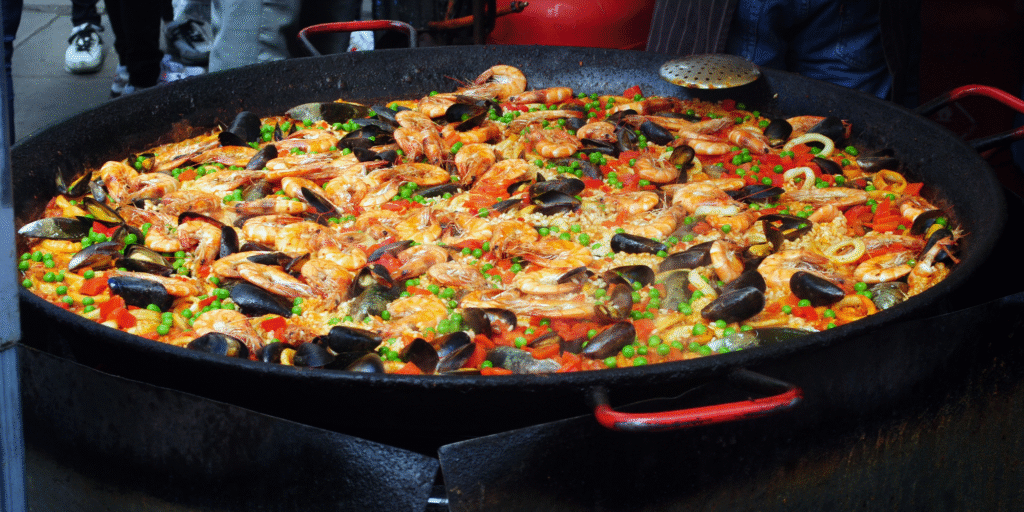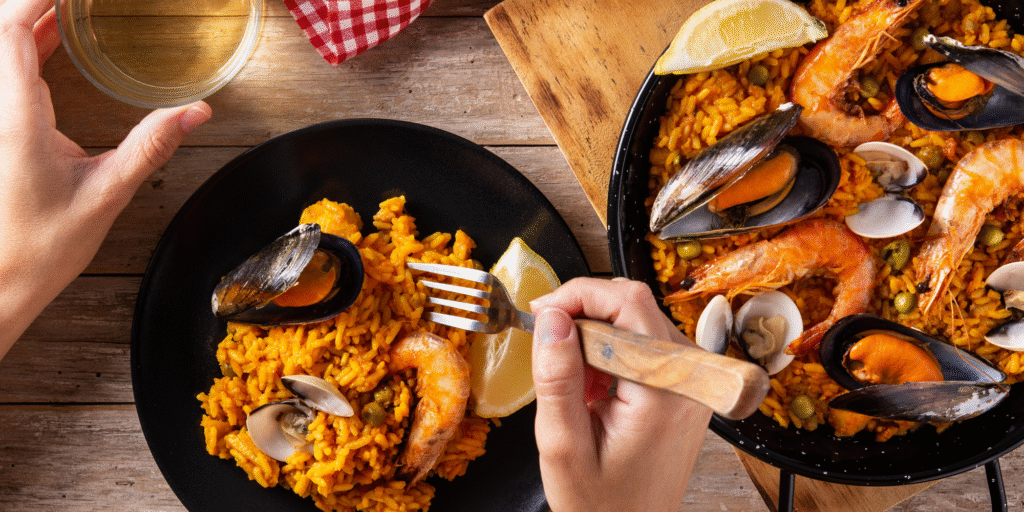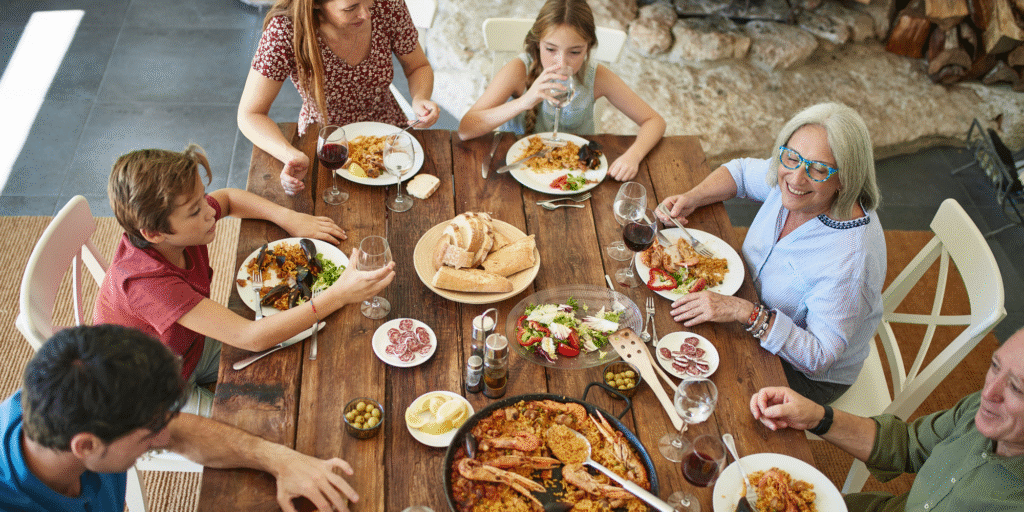Few dishes say “Spain” quite like paella. Golden rice, saffron aroma, fresh seafood or tender chicken—cooked in a single pan and served with love. Originating from Valencia, paella is more than a meal—it’s a tradition, a gathering, and a symbol of Spain’s rich culinary heritage.
The good news? You don’t need to travel to Spain to enjoy it.
Here’s how to make authentic Spanish paella at home, with easy-to-follow steps and tips that even first-timers can master.
A Quick History: Where Paella Comes From
Paella was born in the countryside of Valencia, where farmers would cook rice with seasonal vegetables, rabbit, and sometimes snails over open fires in the fields. The dish evolved over centuries and now includes many regional variations—from Paella Valenciana to seafood paella and mixed paella (mixta).
One thing remains constant: paella is meant to be shared.
What You Need: Traditional Paella Ingredients
You don’t need a fancy setup—but authentic ingredients make a big difference.

paella valenciana
Core Ingredients (for 4 servings):
- 2 cups Bomba or Calasparra rice (short-grain Spanish rice)
- 4 cups chicken or seafood stock
- 1 pinch of saffron threads
- 1 tsp smoked paprika
- 1 small onion, finely chopped
- 3 cloves garlic, minced
- 1 ripe tomato, grated or chopped
- ½ cup green beans (optional for Valencia style)
- ½ cup peas
- 10–12 mussels or clams (cleaned)
- 8–10 shrimp (peeled, heads optional)
- 200g chicken thighs, cut into chunks (or substitute with rabbit)
- Olive oil, salt, and lemon wedges to serve
“Learn more about paella’s rich history in BBC Good Food’s guide“
- A paella pan (or a large, flat skillet)
- A gas stove or BBQ grill for even heat
- A wooden spoon
- A lid or foil to cover (if cooking indoors)
Step-by-Step: How to Make Spanish Paella at Home
What Equipment You’ll Need
Step 1: Infuse Your Broth
First, warm your stock and infuse it with saffron to infuse flavor and color. Keep warm.
Step 2: Sauté the Base
Next, in your paella pan, heat olive oil and sear the chicken until golden. Add onion, garlic, and paprika. Stir until soft and aromatic.
Step 3: Add Tomato
Add the grated tomato and cook down until thick—this is your sofrito, the flavor base.
Step 4: Add Rice and Coat
Pour in the rice and stir to coat it in the sofrito. This gives the rice a rich flavor from the start.
Step 5: Pour in the Broth
Add the hot broth and do not stir again (this is key to getting the crispy socarrat at the bottom). Let it simmer gently.
Step 6: Arrange Seafood
When most of the liquid is absorbed (about 10 minutes in), gently add the shrimp, mussels, peas, and green beans on top.
Step 7: Let it Rest
Finally, once the liquid is fully absorbed and rice is cooked (15–20 mins), remove from heat, cover with foil, and let it rest for 5–10 minutes.
How to Serve Spanish Paella
- Serve straight from the pan—no plating needed.
- Add lemon wedges for that extra zing.
- Pair with a glass of dry white wine or sangria.

serving the paella
Paella Pro Tips for First-Timers
- Don’t stir after adding broth! This is how you get that prized crust (socarrat) at the bottom.
- Avoid long-grain rice—stick to Spanish short-grain for best results.
- If using saffron feels expensive, use a saffron substitute blend with turmeric and paprika.
- Cook over an open flame or BBQ for a more authentic smoky flavor.
“Understanding traditional customs like sobremesa enriches your cooking experience—here’s what else you should know about Spanish dining culture.”
Final Thought: Paella Is More Than a Recipe—It’s an Experience
Making paella at home is about slowing down, gathering friends or family, and celebrating good food. Don’t worry about perfection. What matters most is that you enjoy the process—and the people around your table.

sharing paella with family
So light a flame, raise a glass, and bring a little Spanish sunshine into your home.
¡Buen provecho! 🇪🇸
